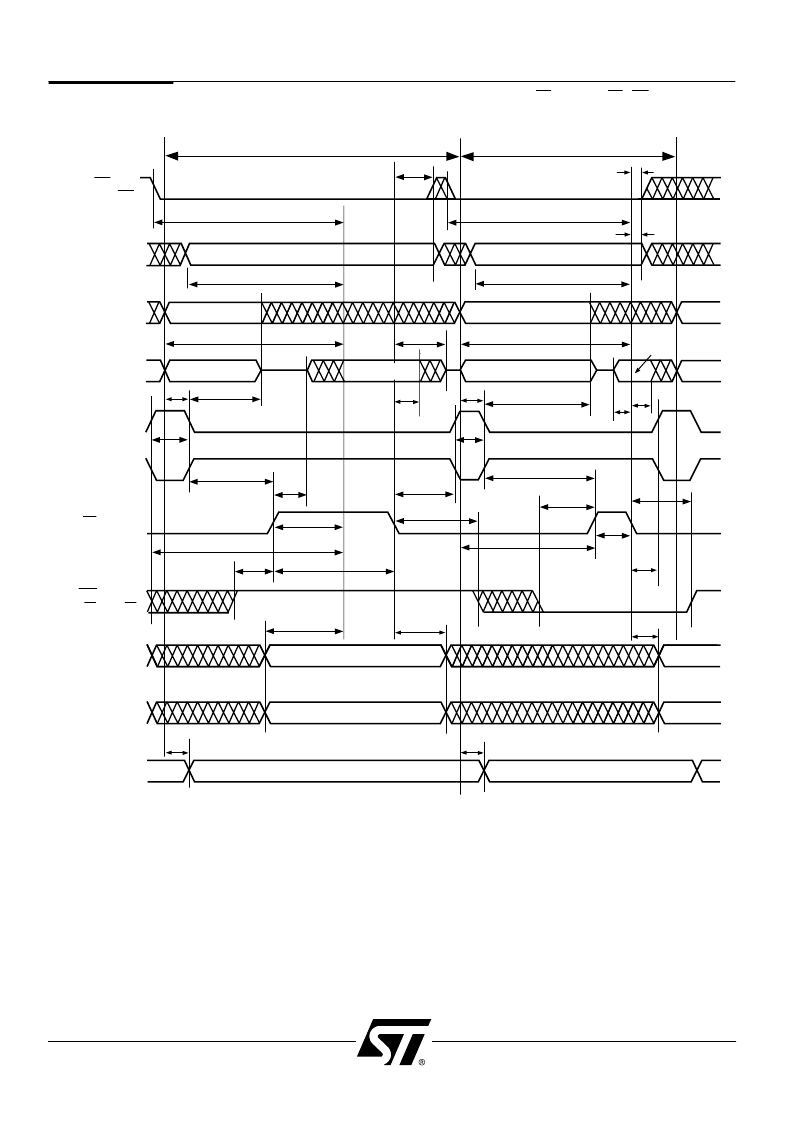- 您現(xiàn)在的位置:買賣IC網(wǎng) > PDF目錄376254 > PSD302V-A-90J (意法半導(dǎo)體) Low Cost Field Programmable Microcontroller Peripherals PDF資料下載
參數(shù)資料
| 型號: | PSD302V-A-90J |
| 廠商: | 意法半導(dǎo)體 |
| 英文描述: | Low Cost Field Programmable Microcontroller Peripherals |
| 中文描述: | 低成本現(xiàn)場可編程微控制器外圍設(shè)備 |
| 文件頁數(shù): | 49/85頁 |
| 文件大小: | 691K |
| 代理商: | PSD302V-A-90J |
第1頁第2頁第3頁第4頁第5頁第6頁第7頁第8頁第9頁第10頁第11頁第12頁第13頁第14頁第15頁第16頁第17頁第18頁第19頁第20頁第21頁第22頁第23頁第24頁第25頁第26頁第27頁第28頁第29頁第30頁第31頁第32頁第33頁第34頁第35頁第36頁第37頁第38頁第39頁第40頁第41頁第42頁第43頁第44頁第45頁第46頁第47頁第48頁當(dāng)前第49頁第50頁第51頁第52頁第53頁第54頁第55頁第56頁第57頁第58頁第59頁第60頁第61頁第62頁第63頁第64頁第65頁第66頁第67頁第68頁第69頁第70頁第71頁第72頁第73頁第74頁第75頁第76頁第77頁第78頁第79頁第80頁第81頁第82頁第83頁第84頁第85頁

PSD3XX Famly
46
Figure 22. Timng of 8-Bit Multiplexed Address/Data Bus Using R/W E or R/W DS (PSD3X1)
18
33
34
36
19
DATA VALID
CSI/A19
as CSI
DATA
IN
8
12
5
1
32
7
15
32
32
14
14
6
6
10
9
ADDRESS A
2
ADDRESS B
3
4
33
13
2
16
17
12
13
20
23
23
ADDRESS A
ADDRESS B
INPUT
INPUT
OUTPUT
OUTPUT
READ CYCLE
WRITE CYCLE
STABLE INPUT
STABLE INPUT
Direct
(1)
PAD Input
Multiplexed
(2)
Inputs
A0/AD0-
A7/AD7
Active Low
AS
Active High
AS
RD/E as E
WR/V
PP
or
R/W as R/W
Any of
PA0-PA7
as I/O Pin
Any of
PA0-PA7 Pins
as Address
Outputs
Any of
PB0-PB7
as I/O Pin
1
3
34
35
35
See referenced notes on page 64.
相關(guān)PDF資料 |
PDF描述 |
|---|---|
| PSD302V-A-90JI | Low Cost Field Programmable Microcontroller Peripherals |
| PSD302V-A-90JM | Low Cost Field Programmable Microcontroller Peripherals |
| PSD303 | Low Cost Field Programmable Microcontroller Peripherals |
| PSD303-15J | Low Cost Field Programmable Microcontroller Peripherals |
| PSD303-15JI | Low Cost Field Programmable Microcontroller Peripherals |
相關(guān)代理商/技術(shù)參數(shù) |
參數(shù)描述 |
|---|---|
| PSD302V-A-90JI | 制造商:STMICROELECTRONICS 制造商全稱:STMicroelectronics 功能描述:Low Cost Field Programmable Microcontroller Peripherals |
| PSD302V-A-90JM | 制造商:STMICROELECTRONICS 制造商全稱:STMicroelectronics 功能描述:Low Cost Field Programmable Microcontroller Peripherals |
| PSD303 | 制造商:STMICROELECTRONICS 制造商全稱:STMicroelectronics 功能描述:Low Cost Field Programmable Microcontroller Peripherals |
| PSD303-12B | 制造商:未知廠家 制造商全稱:未知廠家 功能描述:Field-Programmable Peripheral |
| PSD303-12J | 制造商:未知廠家 制造商全稱:未知廠家 功能描述:Field-Programmable Peripheral |
發(fā)布緊急采購,3分鐘左右您將得到回復(fù)。